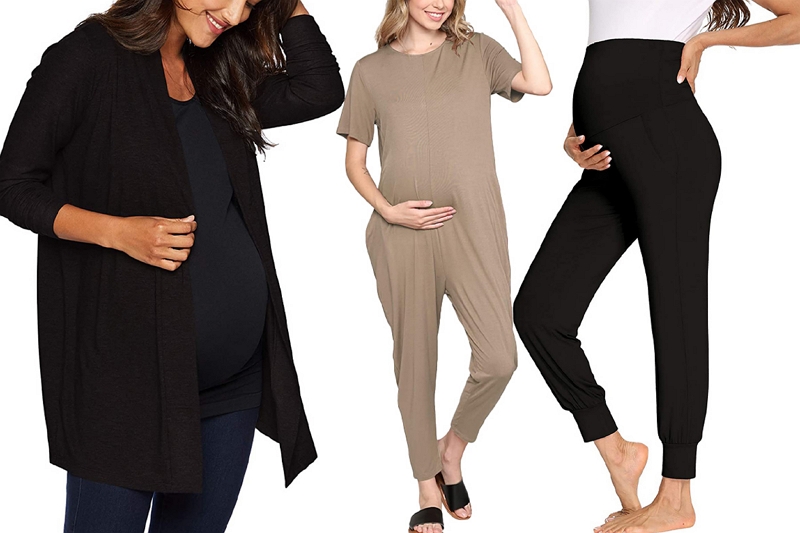In this guide, you will learn How to Buy Maternity Jeans.
Choosing how to buy maternity jeans can be an intimidating task for any woman. Every woman is different and there are so many options that it may seem like a daunting task. However, this article will help break down how to buy the perfect pair of maternity jeans in just three easy steps!

Ways to Buy Maternity Jeans
1) Find your current size – if you don’t know what size you wear currently, find out by trying on some pairs at home or in-store.
2) Measure around your hips with a measuring tape
3) Look at the sizing chart for one of the online stores where you plan on buying from – usually these charts will show how they compare to other brands’ sizes
How many weeks of maternity leave am I entitled to?
You can take up to 17 consecutive weeks of maternity leave if you’re employed by a company with 50 or more employees.
What are some tips on how to dress?
During pregnancy, several things need to be considered before dressing yourself each day. Firstly, make sure you choose loose-fitting clothes so that nothing feels too tight across your stomach area which may lead to rashes or discomfort later in the day if something seems off with your bump. Also, avoid wearing any low cut necklines as this may irritate your skin when the baby kicks.
Maternity clothing should be breathable and comfortable for you to wear, so it would probably be best not to opt for jeans or tight clothing if they aren’t usually worn daily as this may irritate being too restrictive.
How do I know what size to buy in maternity clothes?
One of the first things you need to know is what size clothing are you currently wearing? This will be a good indicator. You can also look at maternity clothes in your closet, or if any friends have given birth recently they may give you some advice on sizing as well.
What is Prenatal Care?
Prenatal care begins when you go in for your first visit and continues until after the baby has been delivered. You should meet with your midwife at least once per month during this period.
The purpose of these appointments is to check on mom and baby’s health as well as take tests such as blood pressure readings and urine samples among many other things that may be deemed necessary.
This appointment usually lasts around an hour-and-a-half-long depending on the number of questions you have along with how much information there is about being pregnant from week to week.
A lot of the tests you will be taking at your appointments are very important. They can help catch problems early on and they allow mom to ask questions about what is going on with her body, like if she feels something different or notices changes in her weight gain etc.
During prenatal care visits, these things may happen:
-Baby’s heartbeat is checked by listening for it with a Doppler (a handheld device that uses sound waves) or stethoscope (an instrument used to listen to internal sounds within the body).
Sometimes this might need to be done while the baby moves around so your provider might have you go home and drink some fruit juice before coming back in for another visit. If they don’t hear the heartbeat at home, they may want to do an ultrasound (picture of a baby made by bouncing sound waves off the belly) or have you come back in for another visit.
-You will be asked about your health habits, diet and exercise routines during pregnancy as well as any other medical issues you are currently experiencing.
-Your provider will check mom’s weight gain so far, blood pressure, pulse rate, how much urine is leaking from her bladder (if she has not had a urinary tract infection), where the placenta is located (on the front wall of the uterus or on the side which can cause higher chance labour induction), whether her cervix has thinned out enough that it allows light into the vagina through its opening called “cervical os” which is very helpful in predicting whether she will go into labour on her own or not.
-Your provider may repeat a pap smear and pelvic exam, check the baby’s heart rate, listen to the fetal heartbeat with a Doppler stethoscope device (sometimes called “heart finder”), you can even see your baby move around when a vaginal probe is used. If you are uncertain about what these exams entail please contact us for more information!
-You will be asked if there have been any changes during pregnancy that concern you such as bleeding, dizziness, chest pain, serious headache. You’ll also be asked about spotting after intercourse, cramping during periods, yeast infections between menstrual periods lasting longer than usual etc.
When should you go shopping for baby clothing?
You should start shopping for baby clothing around six months before your due date. This is because most women find that their body starts to change shape at about the sixth month of pregnancy, and you will want to make sure that there are clothes available which fit you well. There won’t be as many options if you go too early in your pregnancy!
